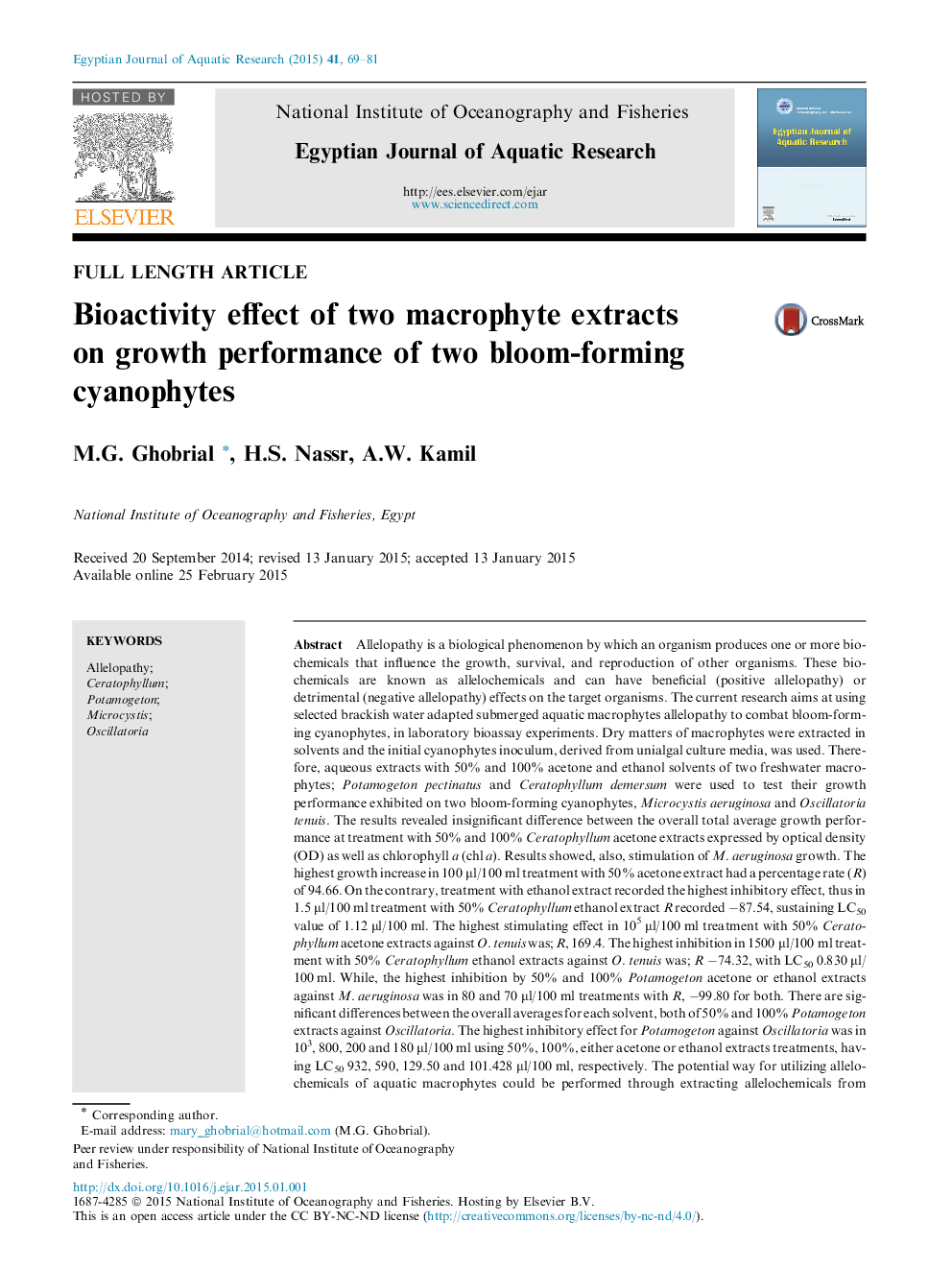| Article ID | Journal | Published Year | Pages | File Type |
|---|---|---|---|---|
| 4493103 | The Egyptian Journal of Aquatic Research | 2015 | 13 Pages |
Allelopathy is a biological phenomenon by which an organism produces one or more biochemicals that influence the growth, survival, and reproduction of other organisms. These biochemicals are known as allelochemicals and can have beneficial (positive allelopathy) or detrimental (negative allelopathy) effects on the target organisms. The current research aims at using selected brackish water adapted submerged aquatic macrophytes allelopathy to combat bloom-forming cyanophytes, in laboratory bioassay experiments. Dry matters of macrophytes were extracted in solvents and the initial cyanophytes inoculum, derived from unialgal culture media, was used. Therefore, aqueous extracts with 50% and 100% acetone and ethanol solvents of two freshwater macrophytes; Potamogeton pectinatus and Ceratophyllum demersum were used to test their growth performance exhibited on two bloom-forming cyanophytes, Microcystis aeruginosa and Oscillatoria tenuis. The results revealed insignificant difference between the overall total average growth performance at treatment with 50% and 100% Ceratophyllum acetone extracts expressed by optical density (OD) as well as chlorophyll a (chl a). Results showed, also, stimulation of M. aeruginosa growth. The highest growth increase in 100 μl/100 ml treatment with 50% acetone extract had a percentage rate (R) of 94.66. On the contrary, treatment with ethanol extract recorded the highest inhibitory effect, thus in 1.5 μl/100 ml treatment with 50% Ceratophyllum ethanol extract R recorded −87.54, sustaining LC50 value of 1.12 μl/100 ml. The highest stimulating effect in 105 μl/100 ml treatment with 50% Ceratophyllum acetone extracts against O. tenuis was; R, 169.4. The highest inhibition in 1500 μl/100 ml treatment with 50% Ceratophyllum ethanol extracts against O. tenuis was; R −74.32, with LC50 0.830 μl/100 ml. While, the highest inhibition by 50% and 100% Potamogeton acetone or ethanol extracts against M. aeruginosa was in 80 and 70 μl/100 ml treatments with R, −99.80 for both. There are significant differences between the overall averages for each solvent, both of 50% and 100% Potamogeton extracts against Oscillatoria. The highest inhibitory effect for Potamogeton against Oscillatoria was in 103, 800, 200 and 180 μl/100 ml using 50%, 100%, either acetone or ethanol extracts treatments, having LC50 932, 590, 129.50 and 101.428 μl/100 ml, respectively. The potential way for utilizing allelochemicals of aquatic macrophytes could be performed through extracting allelochemicals from dried plants and synthesizing allelochemicals with natural structures, as these macrophytes are available excessively in our lakes.
